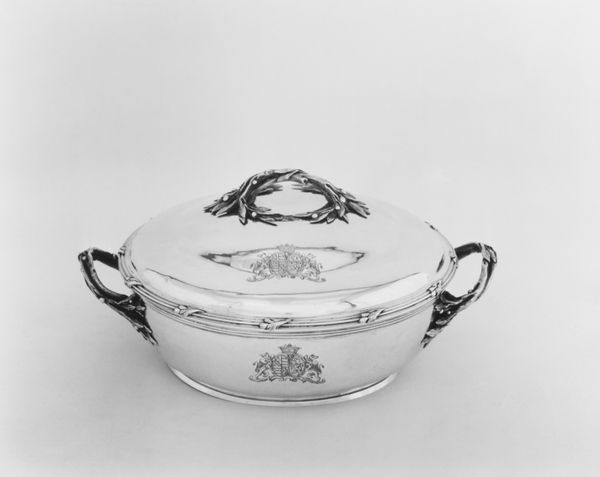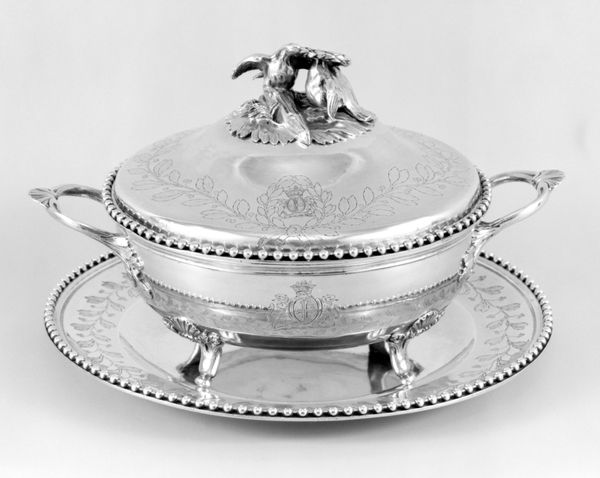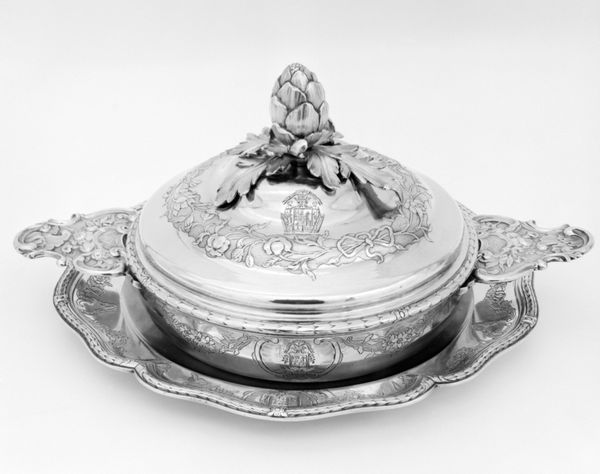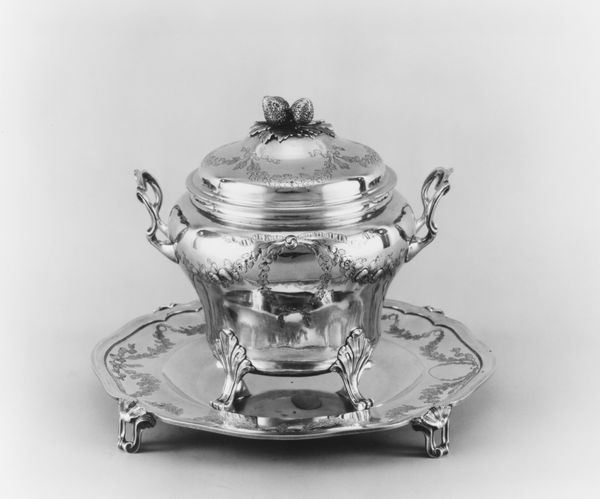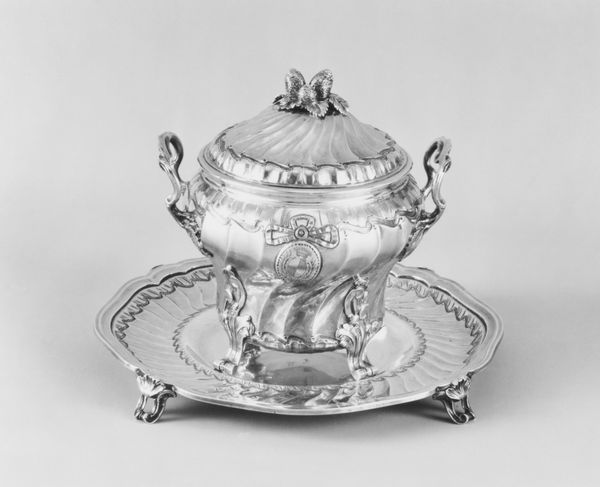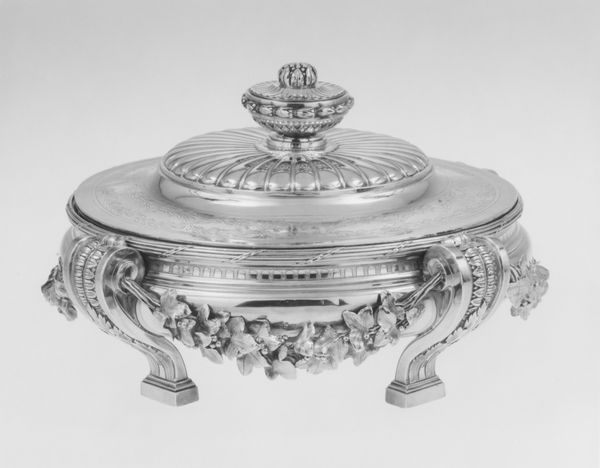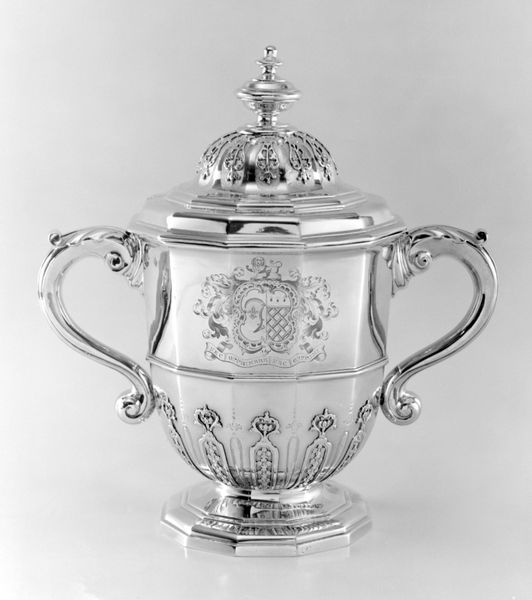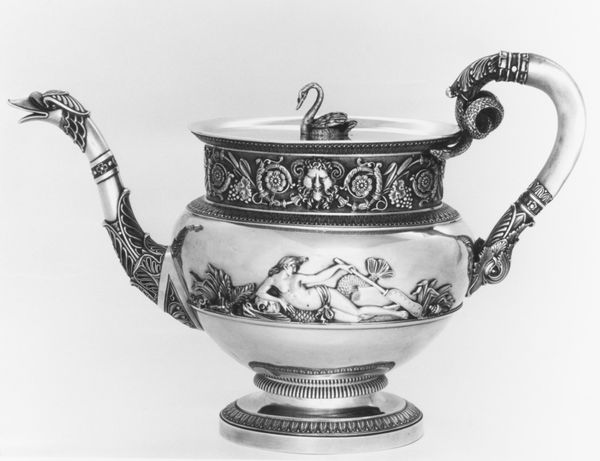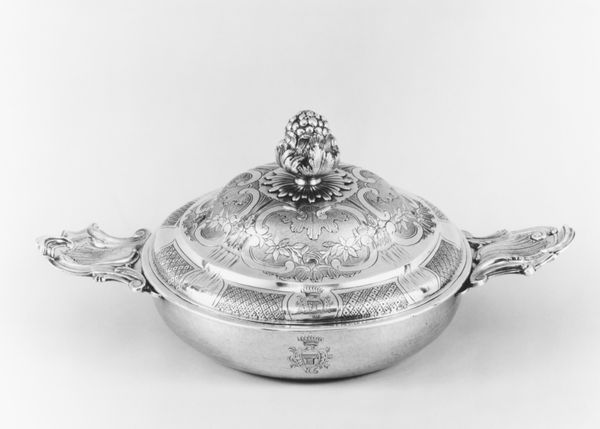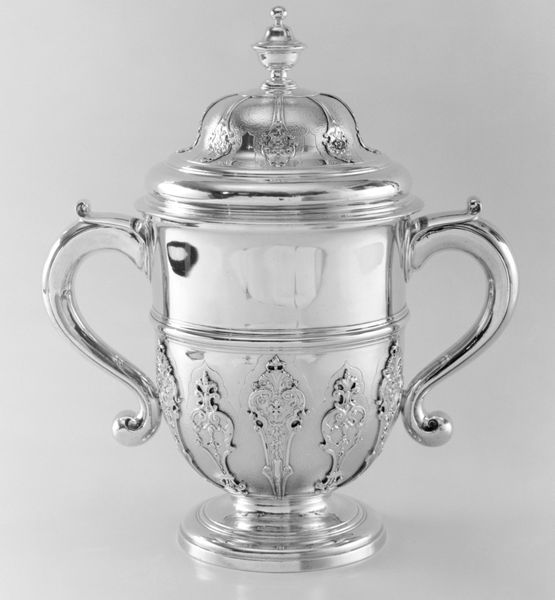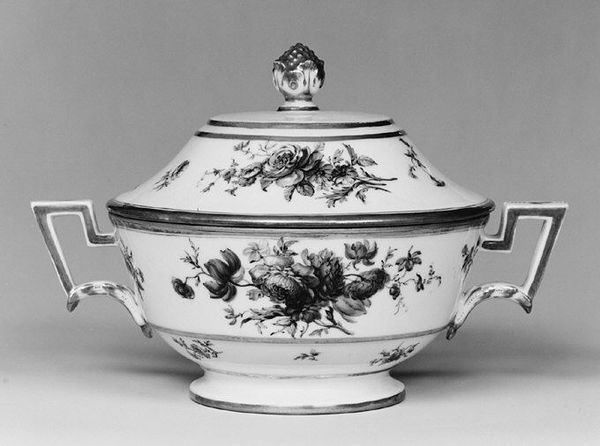
Dimensions: Overall: 9 3/8 × 8 5/8 × 15 1/8 in. (23.8 × 21.9 × 38.4 cm)
Copyright: Public Domain
Editor: This is a silver tureen with cover, made around 1771 or 1772 by Joseph-Pierre-Jacques Duguay. The bird perched on top immediately caught my eye; it feels grand and a little theatrical. What's your take on a piece like this? Curator: The bird is key, isn’t it? As a finial, it's more than just decoration; it's a loaded symbol. Think about birds in art: they often represent freedom, the soul, or a connection to the divine. Considering its place on a tureen, used for serving, perhaps it also hints at abundance or a blessing over the meal. The Rococo period was fascinated by nature, so embedding a bird feels characteristic, yes? But what else stands out? Editor: The coat of arms etched onto the side – it suggests status and importance. Does it influence how we see the bird and the whole object? Curator: Absolutely! Coats of arms were visual shorthand for power, lineage, and belonging. Juxtapose that with the bird. It brings together aristocratic identity and aspiration— a yearning to be free as a bird—or an announcement of control even over natural life. It prompts: "Who commissioned this?" and "What did this family wish to express through these intertwined symbols?" This kind of decorative art reveals how objects carry both cultural memory and social meaning. Does that change how you view the object? Editor: It makes it feel richer, like there’s a story hiding inside the silver. The bird is not *just* a bird. It makes me wonder about the people who used it, and what they valued. Curator: Precisely! Each emblem is a key to understanding a cultural moment. Hopefully it brings you to more profound engagements with imagery moving forward.
Comments
No comments
Be the first to comment and join the conversation on the ultimate creative platform.
